So no, you haven’t dropped into another universe of the space-time continuum. This really is a sewing blog, but this subject is a little technical so I decided to include it here cause it does answer some questions about the two types of seams that seem to be so vexing.
OK enough of the puns, and down to business. The two seams in reference are the crotch and the armhole or armscye seam. Both of these seams contain an area that acts the opposite of what we think of as normal in seam alterations. Normally when we take up a seam, we are decreasing the amount of space in an area. Conversely, when we release (or let out) a seam, we are increasing the amount of space in an area.
But what happens in the armscye and crotch seam in the bottom half of the seam is the exact opposite. And while listening to erudite scholars talk about the time-space continuum and how it shifts from losing time to gaining time according to Einstein’s calculations, this sort of confusing seam alteration reminds me of that illogicality in how time could vary in duration. My mind is now boggled, so let’s get back to seams where life is more predictable.
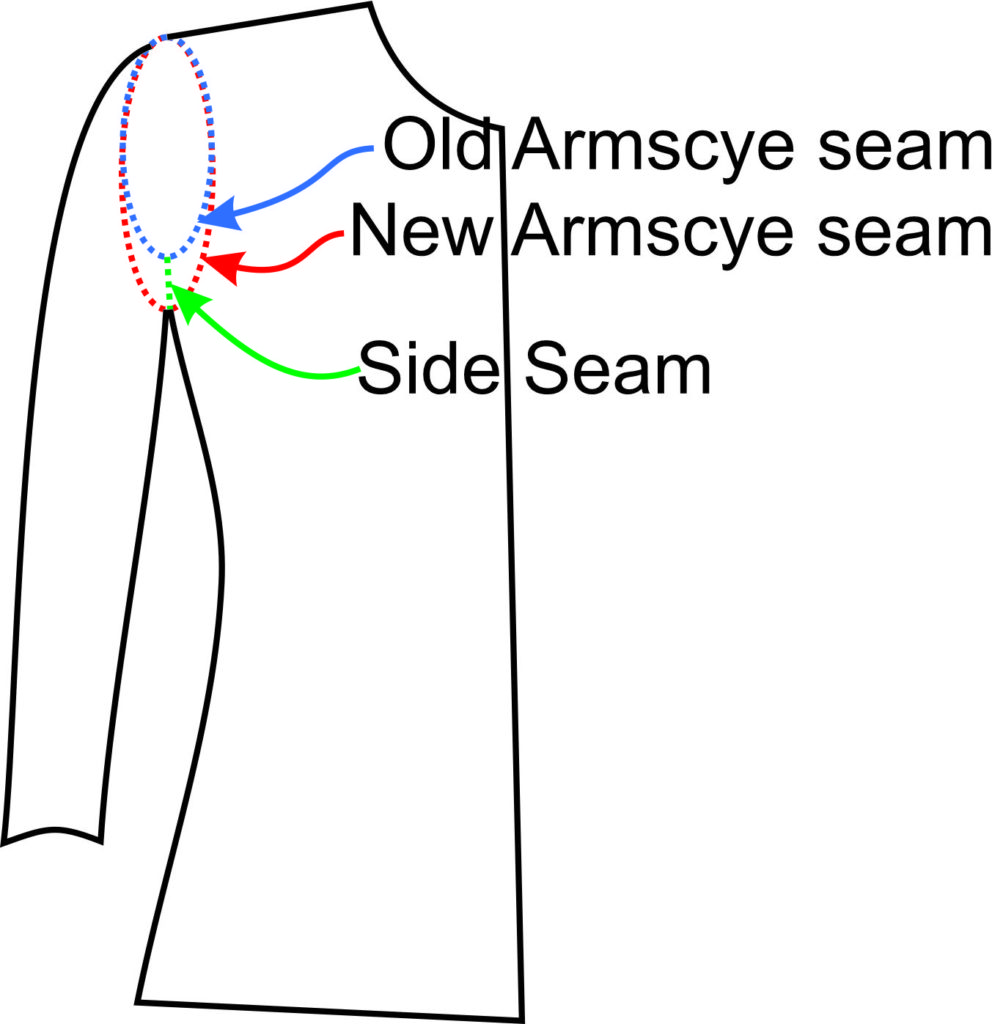
This is probably the best way to show what happens in the underarm. Notice that when the larger (red) armscye is used, there is more space under the arm. When the smaller (blue) armscye seam is used, there is less space. The older one is “taken in” at the seam, while the newer one is “let out” at the seam. In this area when you take in a seam, you create more space, while when you let out a seam you create less space. Yes, that’s backward and hence the name “Einsteinian” Zone!
So really this isn’t so much a bother if you don’t have to mess with an alteration to this seam. But when you do, then you need to be aware that it happens, why it happens, and how to alter using this principle. Here’s how this looks (since I do best with pictures)
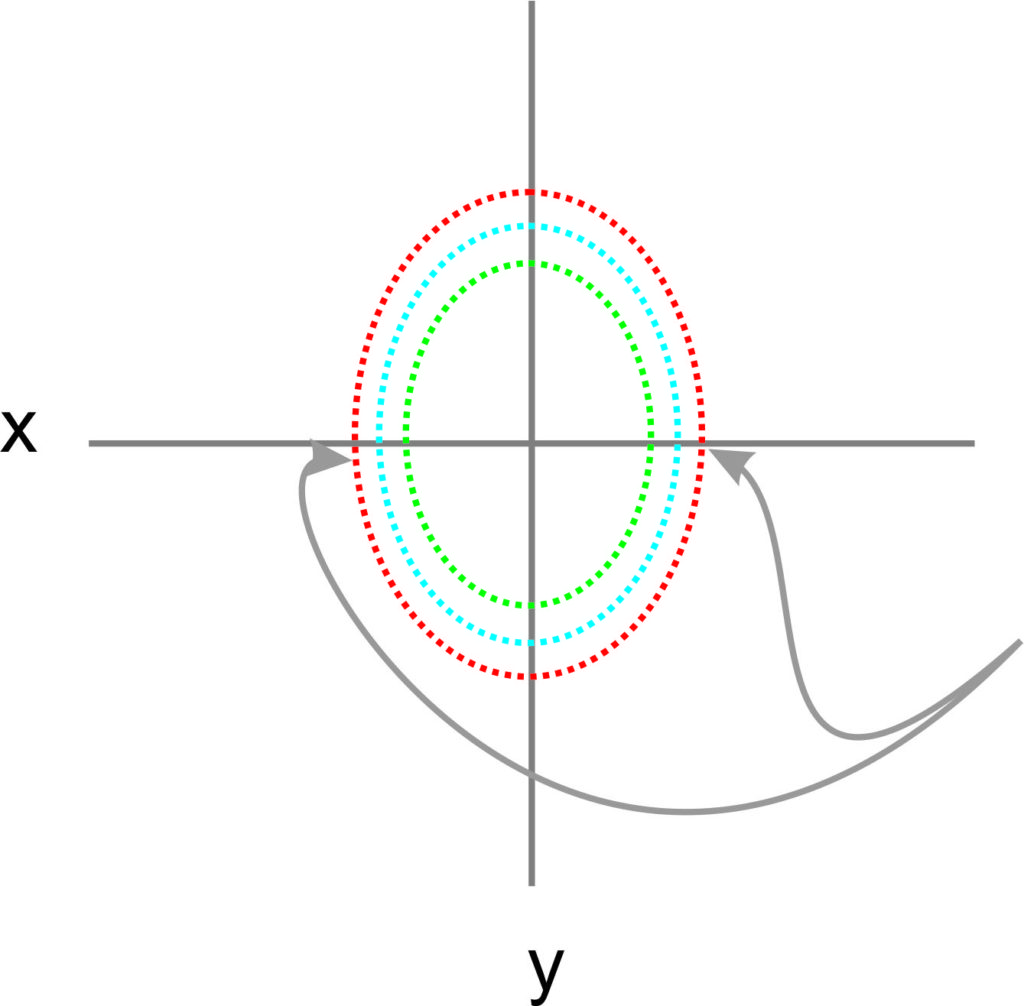
When you put an armscye seam on an x & y graph where x is the horizontal and y is the vertical, it splits the armscye into parts. The above the x-axis and the below the x-axis have different properties. We’re not really concerned with the y-axis right now. Above the x-axis the seam acts normally – take in=less space, let out=more space. Below the x-axis the seam is the opposite – take in-more=space and let out=less space. So the red seam will give us more space below the x-axis and less space above the axis, while the green line will give us more space above the axis and less space below the axis.
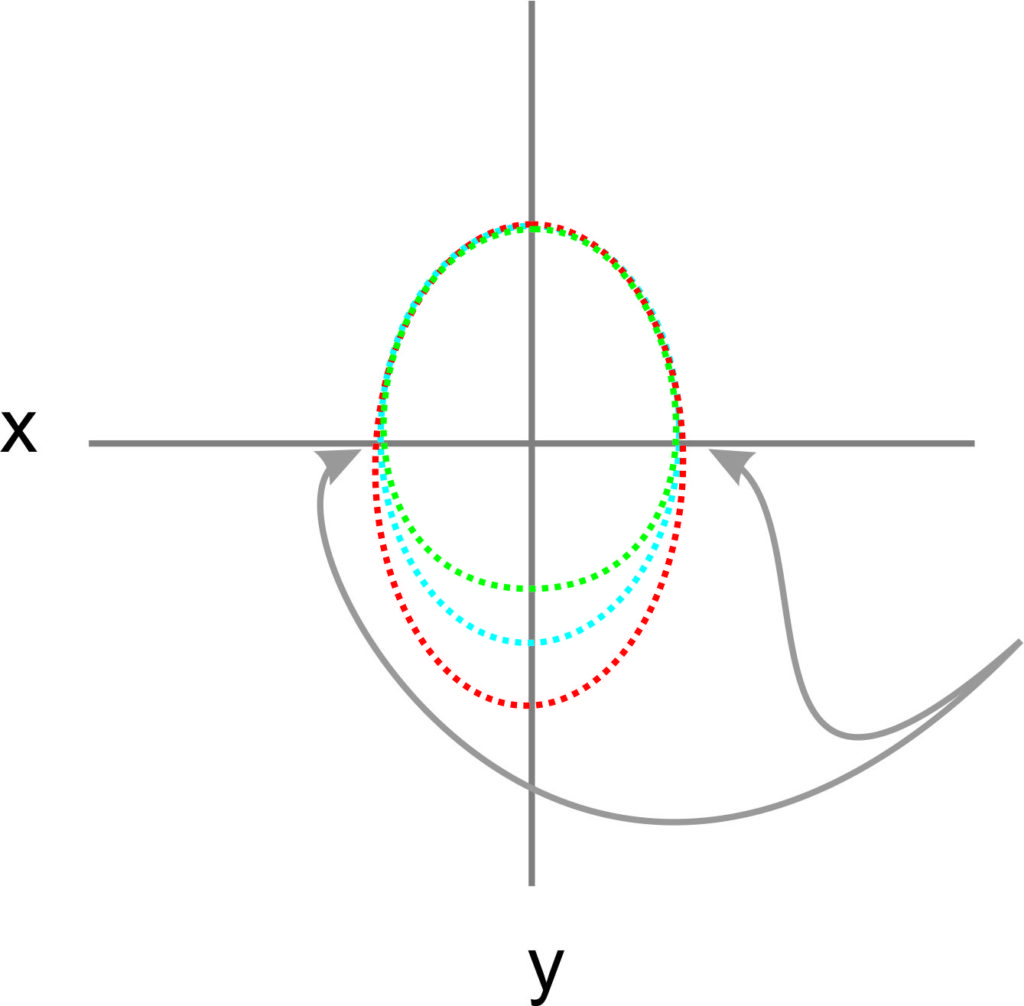
Here is probably the best diagram I can make on the confusion around the armscye. When you are faced with making enlargements to your sleeve to accommodate a large bicep, one of the easiest ways to make that new larger sleeve head accommodate the smaller armhole in the bodice, is to drop the bottom. Say the original armhole was the blue line, by dropping the armscye seam to the red line, you make the armscye larger and therefore it can accommodate the larger sleeve head. This isn’t that hard to — once you know that below the x-axis, making the armscye larger will not only fit the larger sleeve seam, but it will make the armscye larger.
Here’s the best way to explain this.
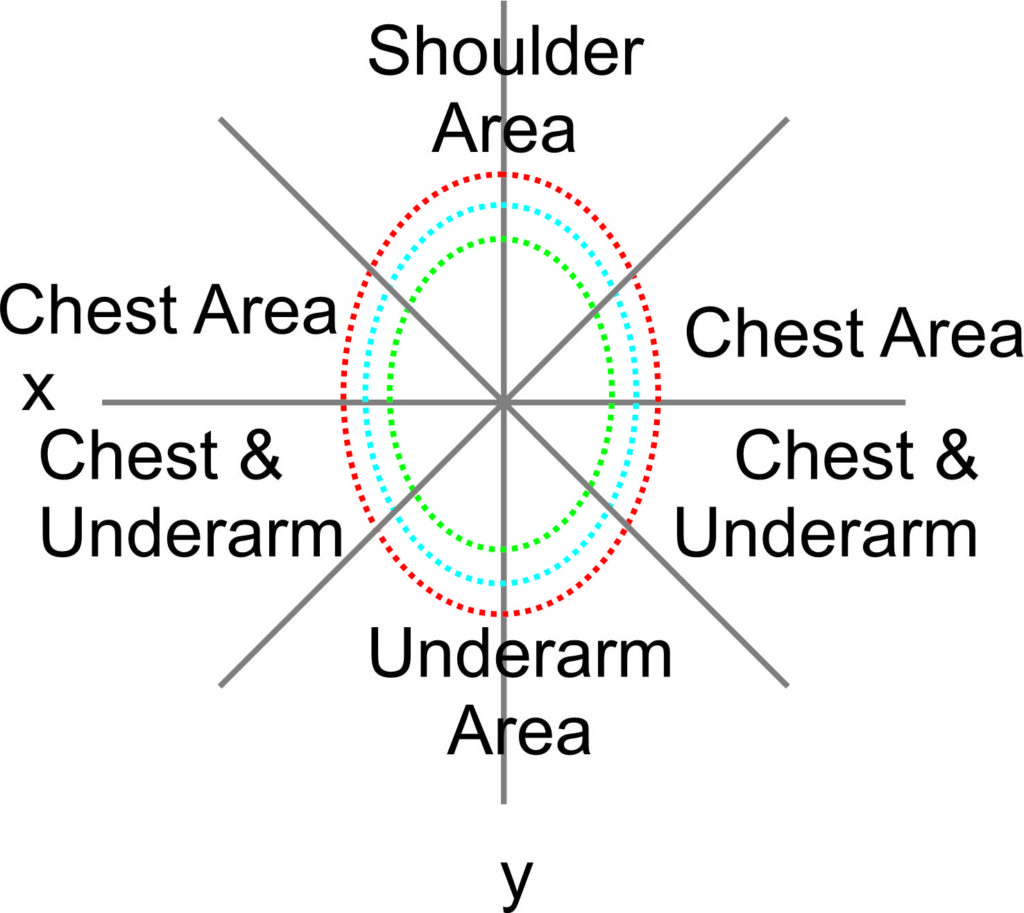
The top 1/4 is for shoulder/upper chest alterations and as normal, take in-less space, let out-more space.
The bottom 1/4 is for underarm alterations and is the opposite as above, take in-more space, let out-less space.
The sides are divided in the upper side (chest area alteration zone) and the lower side (divided between chest and underarm).
NOTE: Once you get below the x-axis, you will begin to change how the seam acts. Once you know that, you know what to be aware of.
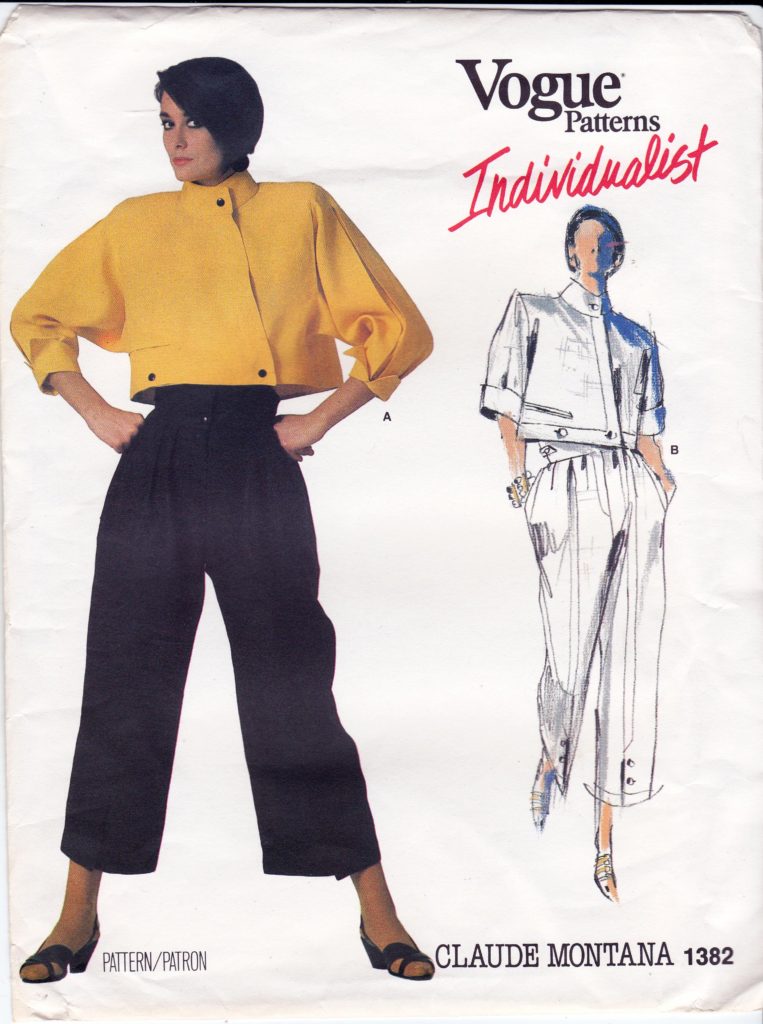
I learned this in spades in the 1980s when I was sewing everything with shoulder pads the size of the D-line for the Chicago Bears. There’s no way that a large shoulder, with a large (usually 2″ or so in height) could fit into a small armscye so the shoulder had to be extended and dropped to accommodate that large shoulder pad. I saw easily what designers were doing. They had to make the armscye bigger to make space for the shoulder pad, and it extended out (as part of “the look”) therefore the underarm seam was dropped to make room for all that largess going on in the style of the garment.
A lot of this may seem like a bunch of hullabaloos or even worse, not really anything worth knowing. But let me tell you – the minute you start messing with the armhole, you will appreciate the relationship between the area above the x-axis and below the x-axis. Not only that but you may also discover that you like the armhole a little deeper or maybe higher and now you know how to do that!
